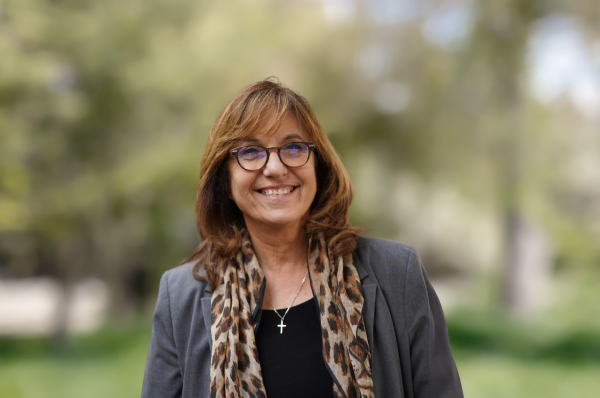You have /5 articles left.
Sign up for a free account or log in.
This past year, the Illinois Institute of Technology launched four incredibly innovative and accessible online degrees on Coursera. These programs are radically priced—with the master’s programs costing $15,000 in full and the bachelor’s program clocking in at $18,000. They require no application. They’re entirely online—and most offer credit for industry microcredentials.
Today, I’m talking with three Illinois Tech leaders about how they brought these programs to life: Kenneth Christensen, provost, senior vice president for academic affairs and chief academic officer; Mallik Sundharam, vice president for enrollment management and student affairs; and Norma Scagnoli, vice provost of learning innovation.
Q: As the focus shifts to student outcomes and degree value, Illinois Tech has risen to No. 23 on WSJ’s Best Colleges list. Is your recent expansion of online degrees, including four new programs on Coursera, part of your strategy to increase access? Also, how do you plan to ensure you deliver the same outcomes, like an impressive starting salary, to your online students?

Kenneth Christensen: Illinois Tech’s mission has always centered on elevating graduates to new heights in career and economic success. Our online degrees through Coursera are a contemporary extension of this mission. These programs offer the same learning outcomes, rigor and expectations as their on-campus counterparts while incorporating industry credentials to ensure our graduates are career-ready.
Addressing the growing some college, no credential population is crucial. Our bachelor’s completion degree through Coursera caters to this segment, delivering quality education aligned with career success. We are committed to ensuring that our online students experience the same impressive outcomes, such as starting salaries, that our on-campus students do.
Mallik Sundharam: The move to offer these online degrees on Coursera is about reaching career changers and growers worldwide. Many of our Coursera learners are employed professionals, with significant work experience, seeking to further their careers. This expansion into online education enhances our global reach, furthering our mission as a comprehensive, inclusive university.

The National Student Clearinghouse has identified [that the] some college, no credential population has reached 40.4 million, up 1.4 million from 39 million in the previous year. The bachelor’s degree completion program launched through Coursera will serve this growing audience segment and [its] demand for quality education that will support these lifelong learners toward career success, growth or change.
Q: There’s been a lot of buzz about industry microcredentials this year, and you seem to be at the forefront of integrating them into online degrees. You offer credit for 13 industry microcredentials from companies like Google, IBM and Meta. What prompted the university to take this approach, and how do you think it benefits students?
Christensen: Embedding industry credentials within our online programs is a continuation of our commitment to experiential, career-focused education. This approach ensures that online students are just as prepared as their on-campus counterparts.
Sundharam: These microcredentials, from giants like Google, IBM and Meta, are valuable in the tech landscape. Aligned with industry standards, these credentials directly relate to tech roles, global recognition and networking opportunities, making them a powerful asset for career growth and adaptability in a dynamic tech market. Over all, these industry microcredentials can be a valuable addition to one’s professional portfolio, signaling to employers a commitment to continuous learning and a strong foundation in relevant, industry-specific skills.
Q: From direct admissions to test-optional pathways, universities are rethinking how to make the process more inclusive. Your online degrees on Coursera offer performance-based admissions, so any student who earns a B in three introductory classes is automatically admitted. Can you share any challenges you had to overcome while advocating for this new model, and have you seen it impact the profile of students in these programs?
Christensen: Implementing performance-based admissions was about aligning with our mission to provide education for all. We had to carefully consider various aspects like infrastructure, support and assessment methods. It's a balance between providing access and ensuring student success potential. This model has diversified our student pool, welcoming individuals with nontraditional backgrounds and varied experiences. It represents a shift in higher education admissions, focusing more on demonstrated skills and knowledge rather than conventional metrics.

Norma Scagnoli: Performance-based admissions is a balancing act of providing seamless access to higher education while adequately assessing an individual’s potential for success in a higher education program. Their performance in three introductory classes accurately reflects their readiness to handle higher ed course commitments. The level of content and rigor of assessments is similar to what a learner at Illinois Tech is expected to fulfill.
Performance-based admissions at Illinois Tech have attracted a more diverse pool of applicants. Acknowledging that not all students follow the same educational path and placing less emphasis on standardized test scores, letters of recommendation and other documents, we saw students with a broader range of experiences and backgrounds contributing to a more diverse and inclusive learning environment for individuals with nontraditional educational backgrounds or those returning to education after a hiatus.
Sundharam: Illinois Tech has always been faithful to its mission of providing access to education for learners from all walks of life. Supporting lifelong learner infrastructure requires a deep understanding of the audience segment as well as careful consideration of infrastructure, including learning platform, learner support structure pre-enrollment and postenrollment, intake frequency, semester length, modality of learning, [synchronous] and asynchronous curriculum delivery, learning evaluation, knowledge review, grading structure and collaboration tools, and overall learner experience.
Transitioning to a new admission model involves an adjustment period for both institutions and prospective students. Clear communication and support systems are essential during this transition. Admitting students based on demonstrated performance in relevant courses may result in a better alignment between admitted students’ skills and the program requirements and, ultimately, greater student success.
However, each institution’s experience may vary depending on factors such as program structure, faculty adaptation, academic governance, accreditation requirements, state requirements and student demographics. Therefore, it’s essential for institutions to carefully monitor and assess the impact of such admission models over time.
Transitioning to this model required adjustments and clear communication. We’re closely monitoring its impact to ensure it aligns with our educational goals and student needs.








